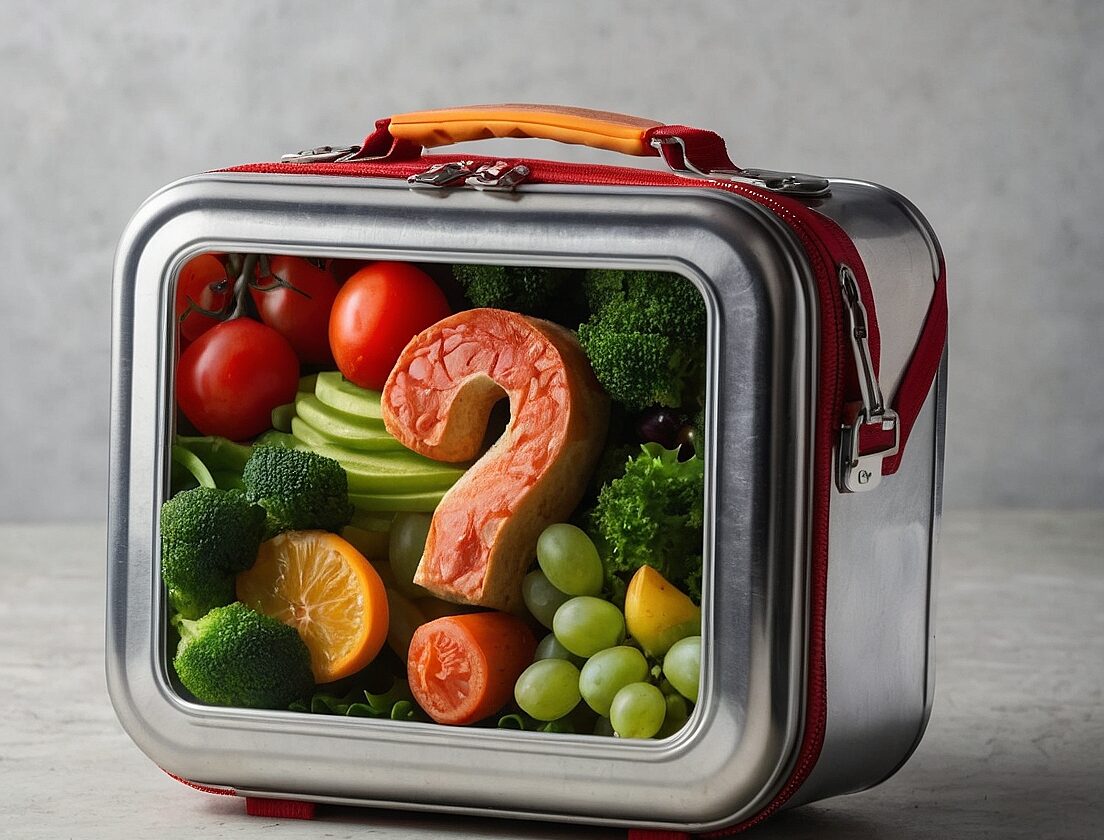Lunch Box Ideas for a Low-Carb, Low-Sodium Diet
Maintaining a low-carb, low-sodium diet can feel like a daunting task, especially when it comes to preparing meals that are both convenient and delicious. But with a little planning and creativity, you can enjoy satisfying, flavorful lunches that support your health goals. I’ve worked and struggled to find the right balance in meals, so I know firsthand how important it is to have a solid game plan. In this article, we’ll dive into some fantastic low-sodium lunch box ideas that are perfect for anyone following a low-carb low-sodium lifestyle.
Understanding Low-Carb and Low-Sodium Diets
The Low-Carb Diet: Fueling Your Body the Right Way
A low-carb diet focuses on reducing carbohydrate intake, which can help with weight management, blood sugar control, and maintaining steady energy levels throughout the day. The goal is to replace high-carb foods with protein, healthy fats, and plenty of vegetables. Common foods in a low-carb diet include lean meats, fish, eggs, nuts, seeds, and non-starchy vegetables like leafy greens, peppers, and zucchini.
When I first started experimenting with a low-carb diet, I was amazed at how much more energy I had throughout the day. My afternoon slumps became a thing of the past, and I felt more satisfied after meals. If you’re new to low-carb eating, it might take some time to adjust, but trust me, the benefits are worth it.
The Low-Sodium Diet: Protecting Your Heart
A low-sodium diet is crucial for those looking to manage blood pressure, reduce the risk of heart disease, and avoid other chronic conditions. The American Heart Association recommends no more than 2,300 milligrams of sodium per day, with an ideal limit of 1,500 milligrams for most adults. This means cutting back on processed foods, salty snacks, and certain condiments that are often loaded with hidden sodium.
Combining a low-carb and low-sodium diet can be a game-changer for your health, but it does require some careful planning. The good news is that there are plenty of delicious foods that fit the bill, and I’m here to help you find them!
Key Components of a Low-Sodium, Low-Carb Lunch Box
Protein Power: Lean and Clean
Protein is the star of the show in a low-carb, low-sodium lunch box. It’s filling, helps build and repair tissues, and keeps you feeling satisfied longer. Lean protein sources like grilled chicken, turkey, tofu, eggs, and fish are all great options. One of my personal favorites is grilled chicken breast seasoned with herbs and spices instead of salt—it’s simple, flavorful, and versatile.
When choosing protein, it’s important to avoid processed meats like deli slices and bacon, which are often high in sodium. Instead, opt for fresh, unprocessed options. I remember the first time I swapped my usual deli turkey for a homemade grilled chicken breast—my lunch felt so much fresher, and I knew I was making a healthier choice.
Veggies Galore: Fiber-Rich and Flavorful
Vegetables are the backbone of any healthy meal, and they play a crucial role in a low-carb, low-sodium diet. Non-starchy vegetables like leafy greens, cucumbers, bell peppers, zucchini, and cauliflower are all low in carbs and high in fiber, making them perfect for your lunch box.
One trick I’ve learned is to mix up the types of veggies I use each week. This not only keeps things interesting but also ensures I’m getting a wide range of nutrients. For example, one week I might focus on crunchy cucumbers and sweet bell peppers, while the next week, I might go for roasted zucchini and cherry tomatoes.
Healthy Fats: The Secret to Staying Full
Incorporating healthy fats into your lunch box is essential for maintaining energy levels and enhancing the flavor of your meals. Avocados, nuts, seeds, and olive oil are excellent choices that provide beneficial fats without the extra sodium.
I often add a few slices of avocado to my salads or wraps—it adds a creamy texture and keeps me full until dinner. And don’t forget about nuts and seeds; a small handful of almonds or sunflower seeds can add a satisfying crunch to your meal.
Low-Sodium, Low-Carb Snacks: Keep Hunger at Bay
Having a few snacks on hand is always a good idea, especially if you have a long day ahead. Low-carb, low-sodium snacks like raw vegetables with hummus, unsweetened yogurt, hard-boiled eggs, and cheese sticks are all great options.
I like to pack a small snack box with a mix of raw veggies, a hard-boiled egg, and a few almonds. It’s a quick and easy way to stay on track without reaching for something less healthy.
Practical Lunch Box Ideas
Salad-Based Lunches: Fresh and Filling
Salads are a fantastic way to pack a lot of nutrients into one meal, and they’re easy to customize to your taste. One of my go-to lunches is a Grilled Chicken Caesar Salad with a homemade low-sodium dressing. I swap out the traditional croutons for extra veggies like cucumbers and cherry tomatoes.
Another favorite is a Spinach and Avocado Salad with grilled shrimp—it’s loaded with healthy fats, protein, and tons of flavor.
Wraps and Roll-Ups: Portable and Delicious
Wraps are perfect for a low-carb, low-sodium lunch box, especially when you use lettuce or low-carb tortillas. One of my favorites is a Turkey and Avocado Lettuce Wrap. I layer slices of turkey, avocado, and a few slices of red onion in large lettuce leaves, then roll them up for a crunchy, satisfying meal.
For a different twist, try Chicken and Veggie Roll-Ups using grilled chicken breast, roasted red peppers, and a smear of low-sodium hummus—all wrapped up in a large romaine leaf.
Protein-Packed Bowls: Build Your Own
Bowls are another versatile option that you can mix and match based on what you have on hand. Start with a base like quinoa or cauliflower rice, then add your favorite proteins, veggies, and a flavorful low-sodium dressing.
One of my favorite combinations is a Quinoa and Grilled Veggie Bowl with a Lemon-Tahini Dressing. I love the mix of textures and flavors, plus it’s super easy to prep ahead of time.
Soups and Stews: Warm and Comforting
Soup is a comforting choice for lunch, especially during colder months. The key is to make your own to control the sodium content. A Low-Sodium Chicken and Vegetable Soup is a great option—you can load it up with lean chicken, carrots, celery, and any other veggies you like.
I usually make a big batch on the weekend and portion it out into individual containers. That way, I have a warm, hearty lunch ready to go all week.
Snack Boxes: Fun and Easy
Snack boxes are a great way to enjoy a variety of flavors and textures without a lot of prep work. I like to fill mine with hard-boiled eggs, cheese cubes, cherry tomatoes, and a small handful of almonds. It’s a balanced mix of protein, healthy fats, and fiber that keeps me satisfied throughout the day.
Another idea is a Mediterranean Snack Box with hummus, sliced cucumbers, bell peppers, and a few olives. It’s light, fresh, and perfect for when you’re on the go.
Tips for Meal Preparation and Planning
Batch Cooking: Save Time and Stay on Track
Batch cooking is a lifesaver when it comes to sticking to a low-carb, low-sodium diet. By preparing your proteins, veggies, and snacks in advance, you can ensure that you always have healthy options on hand.
I like to grill several chicken breasts and roast a big tray of mixed vegetables on Sundays. Then, I can easily throw together salads, wraps, and bowls throughout the week without much effort.
Portion Control: Balance Is Key
Even with healthy foods, portion control is important, especially when it comes to high-fat and protein-rich foods. Using portion control containers or measuring tools can help ensure you’re getting the right amount of each component in your meal.
I used to struggle with portion sizes, especially with nuts and seeds. But once I started using small containers to pre-portion my snacks, I found it much easier to stay within my daily goals.
Flavor Enhancement Without Sodium: Spice It Up
Just because you’re cutting back on sodium doesn’t mean your meals have to be bland. Herbs, spices, citrus, and vinegar are all great ways to add flavor without adding salt.
I often use a mix of garlic powder, smoked paprika, and dried oregano to season my chicken and vegetables. Fresh lemon juice and balsamic vinegar are also my go-to choices for adding a bright, tangy flavor to salads and roasted veggies.
Common Pitfalls and How to Avoid Them
Hidden Sodium Sources: Know What to Watch For
Even when you’re careful, it’s easy to overlook hidden sources of sodium. Common culprits include canned soups, salad dressings, sauces, and processed meats.
Always read labels carefully and opt for products labeled “no salt added” or “low sodium.” If you’re dining out or ordering in, don’t be afraid to ask about the sodium content of your meal or request that it be prepared without added salt.
Balancing Variety and Consistency: Keep It Interesting
Eating the same thing every day can lead to diet fatigue, making it harder to stick to your plan. That’s why it’s important to incorporate a variety of foods into your lunch box.
Try rotating different proteins, veggies, and snacks each week to keep things fresh. You might also experiment with new recipes or ingredients to keep your taste buds excited.
Managing Cravings and Hunger: Stay Satisfied
Cravings can be tough to manage, especially when you’re trying to eat healthier. To stay satisfied and avoid the urge to reach for high-carb or salty snacks, make sure your meals are balanced with plenty of protein, fiber, and healthy fats.
Drinking plenty of water, including more fiber-rich foods like vegetables, and focusing on protein can also help keep hunger at bay and reduce cravings.
Conclusion
Preparing a low-carb, low-sodium lunch box might take a little extra effort, but the rewards are worth it. With the right planning and preparation, you can enjoy delicious, satisfying meals that support your health goals every day. Remember, it’s all about finding the right balance and making choices that work for you. So get creative, experiment with new flavors, and enjoy the journey to better health—one lunch box at a time! For recipe ideas and one click shopping, check out RecipeShop.net

